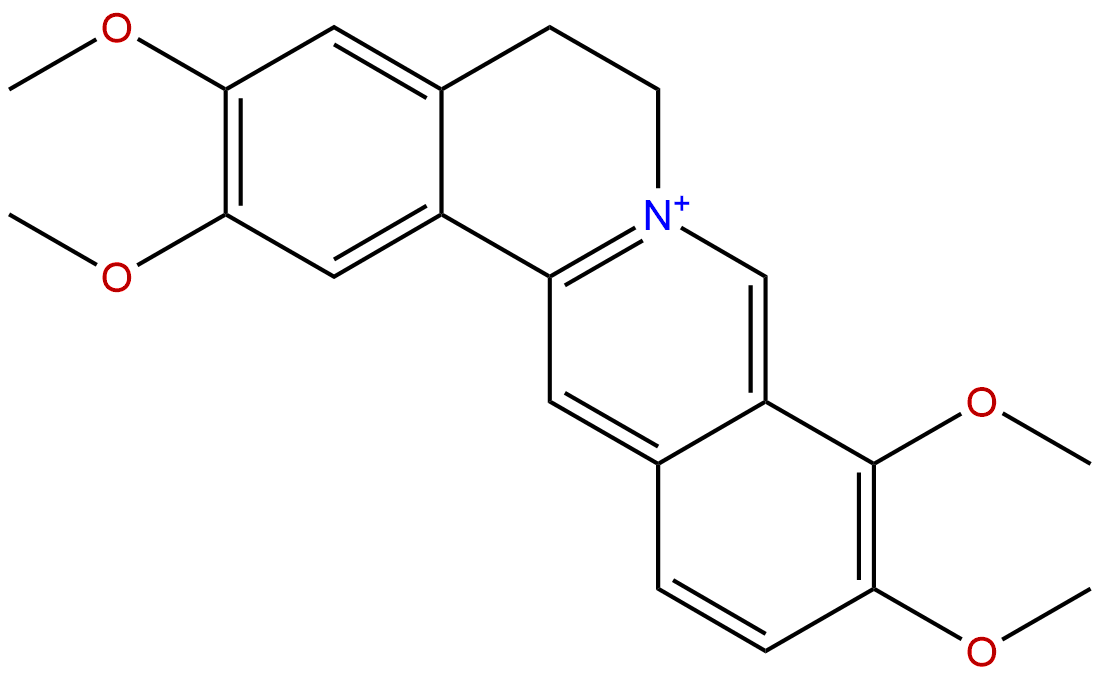
PalmatineCAS No.:3486-67-7
|
||||||||||
 |
|
|
||||||||

| Catalogue No.: | BP1058 |
| Formula: | C21H22NO4+ |
| Mol Weight: | 352.409 |
Product name: Palmatine
Synonym name: Berbericinine; Hindarinine
Catalogue No.: BP1058
Cas No.: 3486-67-7
Formula: C21H22NO4+
Mol Weight: 352.409
Botanical Source: Quaternary alkaloid from Jateorhiza palmata (Menispermaceae) and a large number of other spp., mostly in Berberis and Mahonia (Berberidaceae), but spread into many families
Physical Description: Yellow Powder
Type of Compound: Alkaloids
Purity: 95%~99%
Analysis Method: HPLC-DAD or/and HPLC-ELSD
Identification Method: Mass, NMR
Packing: Brown vial or HDPE plastic bottle
Storage: Store in a well closed container, protected from air and light. Put into refrigerate or freeze for long term storage.
Whenever possible, you should prepare and use solutions on the same day. However, if you need to make up stock solutions in advance, we recommend that you store the solution as aliquots in tightly sealed vials at -20℃. Generally, these will be useable for up to two weeks.
The product could be supplied from milligrams to grams, up to kilograms
Inquire for bulk scale.
Descriptions:
Palmatine , a protoberberine alkaloid, is present in preparations from medicinal plants such as Coptis chinensis and Corydalis yanhusuo, palmatine activates the AhR-CYP1A pathway in HepG2 monolayer, while the potential for CYP1A induction is irrelevant in cell systems which are closer to the in vivo situation, i.e. in HepG2 spheroids and primary cultures of human hepatocytes. [1]
Palmatine exerts protective effect on hepatocytes, the inhibitory effects on I(K) and I(CRAC) could be one of the mechanisms.[2]
The alkaloids berberine, palmatine and sanguinarine are toxic to insects and vertebrates and inhibit the multiplication of bacteria, fungi and viruses; berberine and palmatine were most active at the alpha 2-receptor (binding with IC50 476 and 956 nM, respectively). [3]
Palmatine at a low concentration (50 μg/mL) begins to inhibit the growth of T. thermophila BF5, and when the concentration of palmatine reached 600 μg/mL, T. thermophila BF5 could not grow at all, shows the strong toxic action of palmatine on T. thermophila BF5 growth. [4]
References:
[1] Vrba J, Havlikova M, Gerhardova D, et al. Toxicol Vitro, 2014, 28(4):693-9.
[2] Fang W, Zhou H Y, Lan C, et al. World J Gastroentero, 2003, 9(2):329-33.
[3] Schmeller T, Latz-Brüning B, Wink M. Phytochemistry, 1997, 44(2):257-266(10).
[4] Kong W J, Zhao Y L, Xiao X H, et al. J Hazard Mater, 2009, 168(168):609-13.
[5] Huang J, Weng W, Cao D, et al. Chromatographia, 2005, 62(62):471-74.
HPLC of Palmatine
